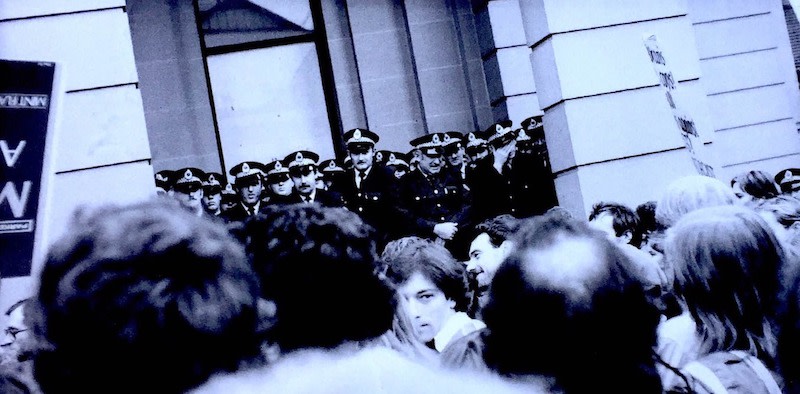New Queer Future Beckons for Former Sydney Police Station

Not-for-profit Qtopia has applied to permanently transform a former police station into the Sydney Centre for Queer History and Culture.
Along with Create NSW—the NSW Government’s arts and culture driver—Qtopia has submitted plans to permanently dedicate the building at 301 Forbes Street as a celebration of queer culture.
The building is of particular significance to the LGBTQIA+ community because it is the former Darlinghurst Police Station where the original 1978 Mardi Gras protesters were detained.
It was decommissioned in the 1980s before being used as the offices for health services responding to the HIV/AIDS crisis.
“The use of this building for the purpose of the Centre for Queer History and Culture represents a unique and significant opportunity to renew the history and future of this building for an important community purpose,” the development application said.
The $330,000 proposal, filed with the City of Sydney Council, plans to use the property for what Qtopia said would be the first facility in NSW to represent the history, culture and stories of the LGBTQIA+ community.
Under the plan there would be internal reconfigurations, retail uses provided and minor internal updates made to the building.
Since December, 2023 the ground floor of the site has been temporarily used by Qtopia as a museum, having been inaugurated at the 2024 Sydney Gay and Lesbian Mardi Gras.

Now, Create NSW and Qtopia want to ensure that the site be used permanently for the cultural landmark, and add an ancillary entertainment and office space to be housed within the building.
The site is within the Oxford Street Cultural and Creative Precinct, identified as a key cultural centre that has undergone significat development in recent years, including the development of new headquarters for Sony.
Transforming a site with a chequered history into an important gathering place to learn about and celebrate Queer cultures will “encourage activation located off Oxford Street for a new and unique use, drawing diverse audiences and helping to stimulate the local economy during the festival,” the application said.
There is extensive potential for placemaking, it said, building upon the area’s rich history of creative and cultural uses, and close to employment and educational institutions including the National Art School and UNSW Art and Design Campus.
















